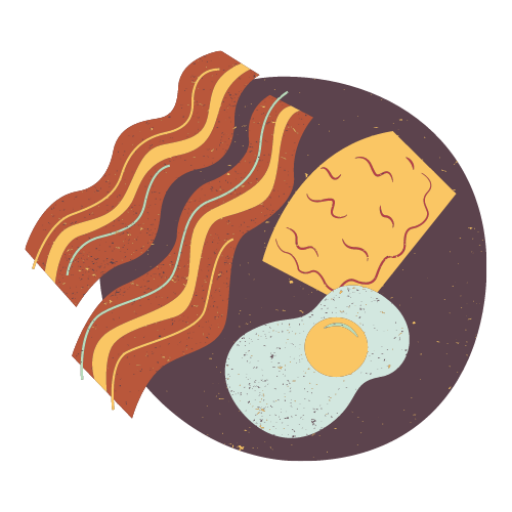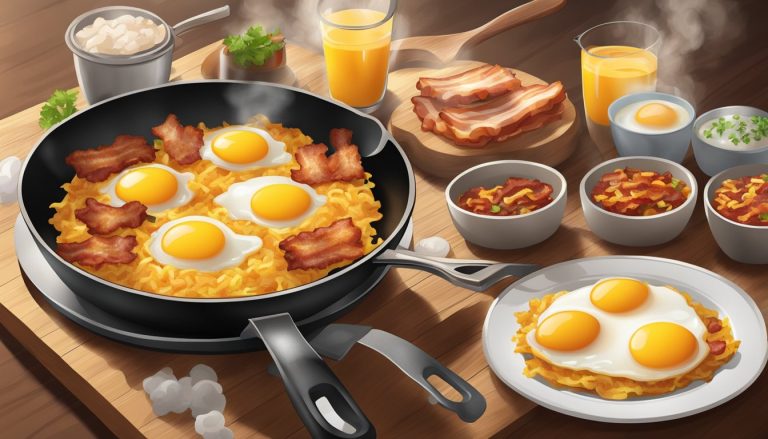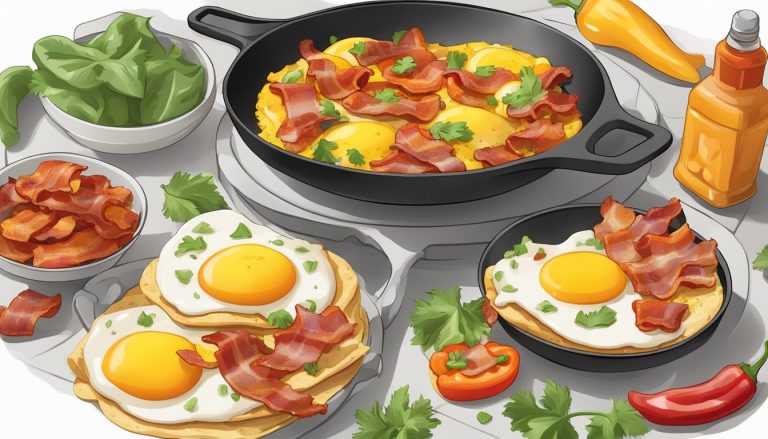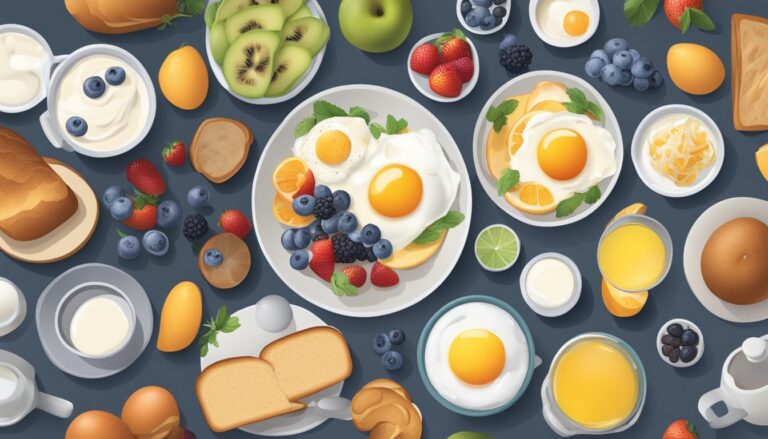Soft pretzel makers have revolutionized homemade breakfast options. These versatile appliances allow you to create fresh, warm pretzels with minimal effort. Soft pretzel dough serves as the foundation for innovative breakfast recipes that transform traditional morning fare.
Crafting perfect pretzels involves combining key ingredients like water, salt, flour, and yeast. The dough is shaped into classic pretzel twists or other forms before baking. With a soft pretzel maker, achieving the ideal texture and golden-brown exterior becomes effortless.
From savory breakfast sandwiches to sweet French toast casseroles, soft pretzels offer a unique twist on morning meals. These recipes showcase the adaptability of pretzel dough and the convenience of using a dedicated appliance. Exploring new ways to incorporate pretzels into breakfast opens up a world of culinary possibilities.
Essential Ingredients for Soft Pretzel Recipes

Creating delicious soft pretzels requires specific ingredients that contribute to their distinctive flavor and texture. The right combination of flour, yeast, sweeteners, and salts is crucial for achieving that perfect pretzel taste and chew.
Choosing the Right Flour
All-purpose flour works well for soft pretzels, providing a balanced texture. For a chewier result, bread flour is an excellent choice due to its higher protein content. This extra protein helps develop stronger gluten strands, resulting in a more satisfying bite.
A blend of all-purpose and bread flour can offer the best of both worlds. Aim for a ratio of 3:1 all-purpose to bread flour for a versatile dough that’s easy to work with and delivers on texture.
Always sift the flour before measuring to ensure accuracy and prevent clumps in the dough.
Yeast Options
Active dry yeast and instant yeast are the two main options for pretzel recipes. Active dry yeast requires proofing in warm water before use, while instant yeast can be mixed directly with dry ingredients.
Instant yeast is more convenient and works faster. It’s ideal for quick pretzel recipes when time is limited. Active dry yeast, though slower, can provide a more developed flavor profile.
For 4 cups of flour, use about 2 1/4 teaspoons of active dry yeast or 2 teaspoons of instant yeast. Ensure the water temperature is around 110°F (43°C) for optimal yeast activation.
Sweeteners and Salts
Sugar plays a vital role in pretzel recipes, feeding the yeast and adding a subtle sweetness. Regular granulated sugar works well, but brown sugar can impart a deeper, molasses-like flavor.
Use about 1 tablespoon of sugar per 4 cups of flour. This amount can be adjusted slightly to taste without significantly impacting the dough’s structure.
Salt is crucial for flavor. Coarse pretzel salt is traditional for topping, but kosher salt is a good substitute. For the dough, fine table salt ensures even distribution.
Add 1 to 1 1/2 teaspoons of salt to the dough for every 4 cups of flour. This enhances flavor without overpowering the other ingredients.
The Science Behind Perfect Soft Pretzels
The perfect soft pretzel relies on precise chemical reactions and specific techniques. These processes contribute to the characteristic golden-brown crust and distinctive flavor that make pretzels so appealing.
Creating the Alkaline Solution
The alkaline solution is crucial for achieving authentic pretzel color and flavor. Traditionally, food-grade lye was used, but baking soda provides a safer alternative for home bakers. To create an effective alkaline bath:
- Dissolve 1/3 cup baking soda in 3 cups of water.
- Bring the solution to a boil.
- Dip each pretzel in the boiling solution for 20-30 seconds.
This brief bath alters the pH of the dough’s surface, promoting browning and creating that distinctive pretzel taste. The alkaline environment also gelatinizes the starches on the surface, resulting in a shinier crust.
The Maillard Reaction for a Golden Crust
The Maillard reaction is responsible for the appealing golden-brown color of pretzels. This complex chemical process occurs when amino acids and sugars in the dough react under high heat. To maximize the Maillard reaction:
- Brush pretzels with an egg wash before baking.
- Bake at a high temperature, typically 425°F to 450°F (218°C to 232°C).
- Ensure proper oven humidity by placing a pan of water on the bottom rack.
The alkaline bath accelerates the Maillard reaction, allowing pretzels to develop a deep golden color more quickly than other baked goods. This reaction not only affects appearance but also contributes to the complex flavors that make pretzels so irresistible.
Step-by-Step Guide to Making Soft Pretzels
Making soft pretzels at home is simpler than you might think. With the right ingredients and techniques, you can create delicious, golden-brown pretzels with a chewy texture and perfect shape.
Preparing the Dough
Mix warm water and instant yeast in a stand mixer. Let it sit for 5 minutes until bubbly. Add sugar, salt, and flour gradually while using the dough hook attachment.
Knead the dough for 5-7 minutes until smooth and elastic. If it’s too dry, add a tablespoon of water. If too sticky, sprinkle in more flour.
Place the dough in a greased bowl, cover with a damp cloth, and let it rise in a warm spot for about an hour. The dough should double in size during this rise time.
Shaping the Pretzels
Divide the risen dough into 12 equal pieces. Roll each piece into a rope about 20-24 inches long.
To shape the pretzel:
- Form a U-shape with the rope
- Cross the ends
- Twist once
- Bring the ends down to the bottom of the U
Press the ends gently to secure the shape. Place shaped pretzels on a lined baking sheet.
Boiling and Baking
Preheat the oven to 450°F (230°C). Prepare a baking soda bath by dissolving 1/3 cup baking soda in 3 cups of boiling water.
Carefully drop each pretzel into the bath for 20-30 seconds. Remove with a slotted spoon and place back on the baking sheet.
Sprinkle pretzels with coarse salt. Bake for 12-15 minutes until golden brown. Rotate the pan halfway through for even baking.
Let the pretzels cool on a wire rack for a few minutes before serving. Enjoy them warm for the best taste and texture.
Variations and Creative Toppings

Soft pretzels offer a versatile canvas for exploring diverse flavors and textures. From traditional salts to sweet glazes and savory seasonings, the options for customizing your pretzel creations are nearly endless.
Classic and Gourmet Salt Options
Coarse salt remains the quintessential pretzel topping. Pretzel salt, with its large, crunchy crystals, provides the classic texture and flavor. For a gourmet twist, try sea salt flakes or Himalayan pink salt. These add visual appeal and subtle flavor nuances.
Flavored salts open up new possibilities. Garlic salt, onion salt, or herb-infused salts complement the pretzel’s rich, bready taste. Experiment with smoked salts for a unique, savory dimension.
Consider salt blends like everything bagel seasoning or za’atar for Middle Eastern flair. These complex flavor profiles elevate soft pretzels from simple snacks to sophisticated treats.
Sweet Pretzel Variations
Cinnamon sugar soft pretzels offer a delightful sweet option. Mix granulated sugar with ground cinnamon and sprinkle generously over buttered pretzels. For added indulgence, drizzle with cream cheese glaze.
Chocolate lovers can enjoy pretzels dipped in melted chocolate and sprinkled with chopped nuts or coconut flakes. Try white chocolate with crushed peppermint for a festive touch.
Fruit-inspired variations like lemon-poppy seed or apple-cinnamon bring bright flavors to soft pretzels. Brush with fruit preserves before baking for a glossy finish and intense fruit taste.
Innovative Soft Pretzel Bites
Soft pretzel bites provide a perfect base for creative flavor combinations. Toss them in garlic butter and parmesan for an Italian-inspired snack. Sprinkle with ranch seasoning for a crowd-pleasing option.
Create pretzel pizza bites by topping with marinara sauce, mozzarella, and mini pepperoni before baking. For a breakfast twist, coat in maple syrup and bacon bits.
Savory options include jalapeño-cheddar bites or everything bagel-seasoned nuggets. Sweet variations like s’mores bites (topped with marshmallow, chocolate, and graham cracker crumbs) offer delightful dessert options.
Try Buffalo-style pretzel bites tossed in hot sauce and served with blue cheese dip for a spicy kick. The possibilities for innovative pretzel bite flavors are limited only by your imagination.
Sauces and Dips

Enhance your soft pretzel breakfast creations with a variety of delectable dips and sauces. These flavorful accompaniments add an extra layer of taste and excitement to your morning meal.
Classic Mustard and Cheese Dips
Spicy nacho cheese sauce pairs wonderfully with soft pretzels. Combine shredded cheddar, diced jalapeños, and cream cheese for a zesty kick. Heat the mixture until smooth and creamy. For a milder option, try a beer cheese dip. Blend sharp cheddar, cream cheese, and a splash of light beer. Melt the ingredients together, stirring until well combined.
Mustard-based dips offer a tangy complement to pretzels. Mix Dijon mustard with honey and a touch of mayonnaise for a sweet and savory spread. For a bolder flavor, combine whole grain mustard with sour cream and fresh dill.
Experimental and Sweet Dips
Venture beyond traditional options with unique flavor combinations. Create a savory bacon and chive cream cheese dip by mixing softened cream cheese with crispy bacon bits and finely chopped chives. For a Mediterranean twist, blend hummus with roasted red peppers and a dash of olive oil.
Sweet dips can transform your pretzel breakfast into a delightful treat. Whip up a cinnamon sugar dip by combining cream cheese, brown sugar, and ground cinnamon. For fruit lovers, mix Greek yogurt with honey and pureed strawberries. These sweet options pair exceptionally well with cinnamon-dusted soft pretzels.
Serving and Storing Soft Pretzels

Proper serving and storage techniques ensure soft pretzels maintain their delicious taste and texture. These methods help preserve freshness and enhance the eating experience.
Best Practices for Serving
Serve soft pretzels warm for the best flavor and texture. Brush them lightly with melted unsalted butter for a glossy finish and richer taste. For a traditional Bavarian presentation, sprinkle coarse salt on top just before serving.
Offer a variety of dips and spreads alongside the pretzels. Classic options include mustard, cheese sauce, and cinnamon sugar. Slice larger pretzels into bite-sized pieces for easier sharing at gatherings.
For a more indulgent treat, stuff pretzels with savory fillings like ham and cheese before baking. Serve on a wooden board or in a bread basket lined with parchment paper to keep them warm longer.
Storage Tips for Freshness
Store cooled pretzels in an airtight container at room temperature for up to 2 days. For longer storage, freeze them for up to 1 month. Wrap each pretzel individually in plastic wrap before placing in a freezer bag to prevent freezer burn.
To reheat, warm thawed pretzels in a 350°F (175°C) oven for 5 minutes. Alternatively, microwave for 20-30 seconds. Brush with melted butter and sprinkle with salt to refresh the taste.
For maximum freshness, avoid storing pretzels in the refrigerator, as this can make them tough and stale. If you plan to serve them later, freeze immediately after cooling for best results.
Nutritional Profile of Homemade Soft Pretzels

Homemade soft pretzels offer a mix of macronutrients and some micronutrients. A typical medium-sized soft pretzel contains approximately 180-220 calories.
The carbohydrate content is significant, ranging from 35-45 grams per pretzel. This includes 1-2 grams of dietary fiber.
Protein content varies between 4-6 grams, while fat content is generally low at 1-3 grams per pretzel.
Sodium levels can be high due to the salt topping, often reaching 400-600 mg per pretzel. This accounts for about 17-26% of the recommended daily intake.
Soft pretzels provide small amounts of essential minerals:
- Iron: 10-15% of daily value
- Calcium: 2-4% of daily value
- Potassium: 2-3% of daily value
They also contain trace amounts of vitamins, including B-vitamins like thiamin and niacin.
Nutritional values can vary based on ingredients and preparation methods. Whole wheat versions may offer more fiber and nutrients compared to those made with refined flour.
Adding toppings or dips can significantly alter the nutritional profile, potentially increasing calories, fat, and sodium content.




